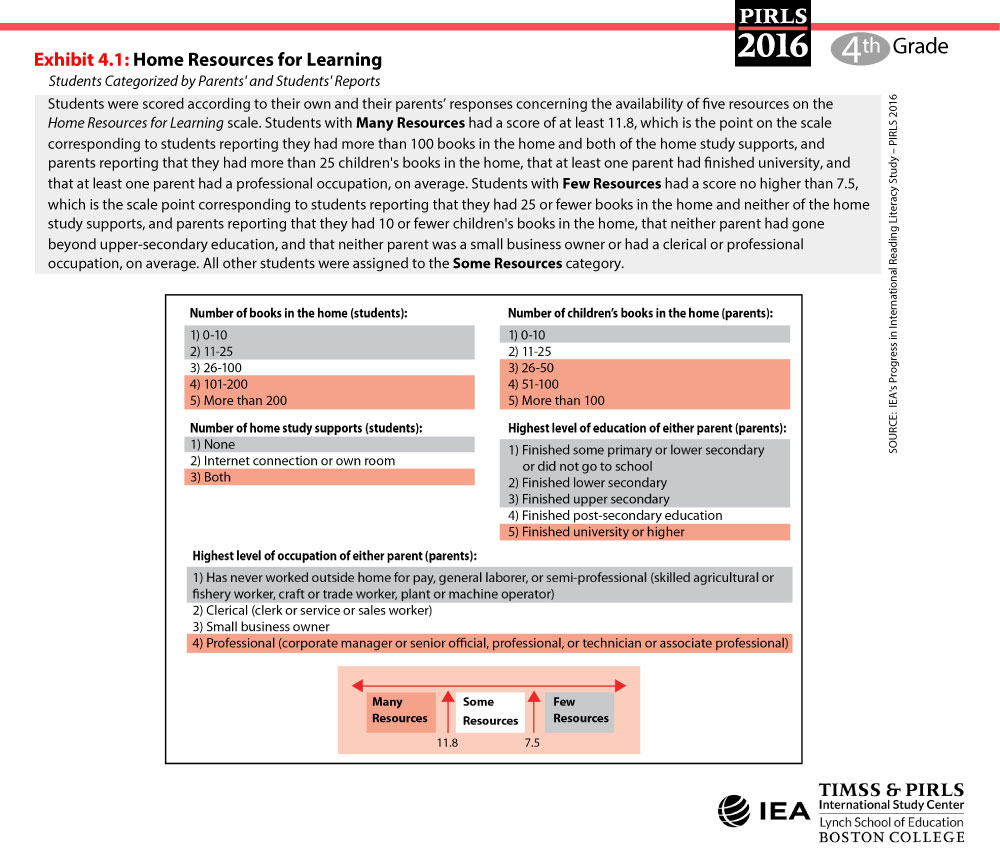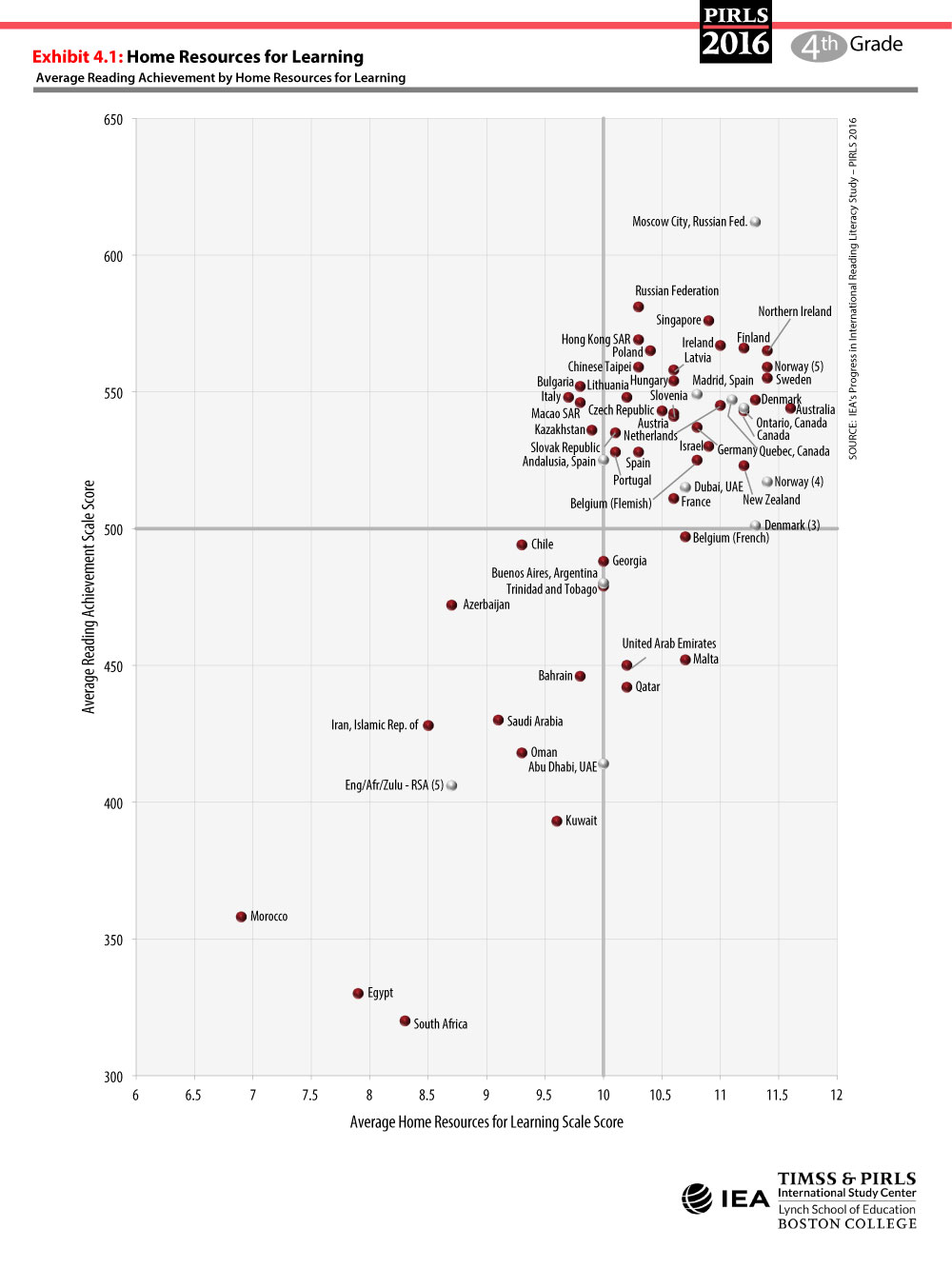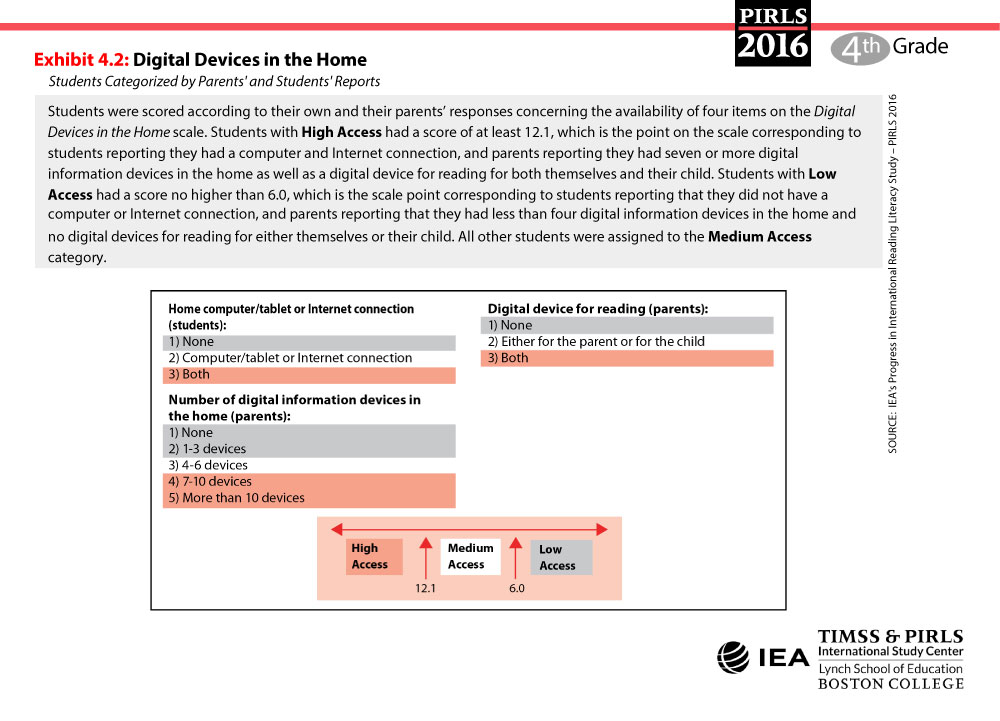The
Home Resources for Learning scale combines data reported by students and their parents. The parents’ data were collected using the PIRLS 2016 Learning to Read Survey in which students’ parents were asked to provide information about their child’s experiences learning to read. As explained in “About the Scale” students provided information about the number of books in the home and other study supports, while the parents provided information about the number of children’s books, the parents’ levels of education, and their occupations. As also explained, students were assigned a score on the scale according to the availability of these five home resources for learning.
The PIRLS 2016 results add to the already extensive amounts of research showing a powerful positive relationship between students’ socioeconomic environment and their educational achievement.
In Exhibit 4.1, countries are ordered by the percentage of students in the Many Resources category. However, on average, almost three-fourths of the students (73%) were assigned to the Some Resources category. Twenty percent were in the Many Resources category and 7 percent were in the Few Resources category, with a 140-point difference in their average reading achievement (572 vs. 432). Average reading achievement for the students in the Some Resources category was in between, at 509 points. The “Scatterplot with Achievement” button shows the relationship between average reading achievement and home resources for learning for each country.
Exhibit 4.2 presents information about students’ access to digital devices in the home. The percentages of students with High, Medium, and Low Access mirror the percentages with Many, Some, and Few Resources. There was a 122-point difference in average reading across the categories of digital access (536 vs. 414), with very low average achievement for those having low access.





